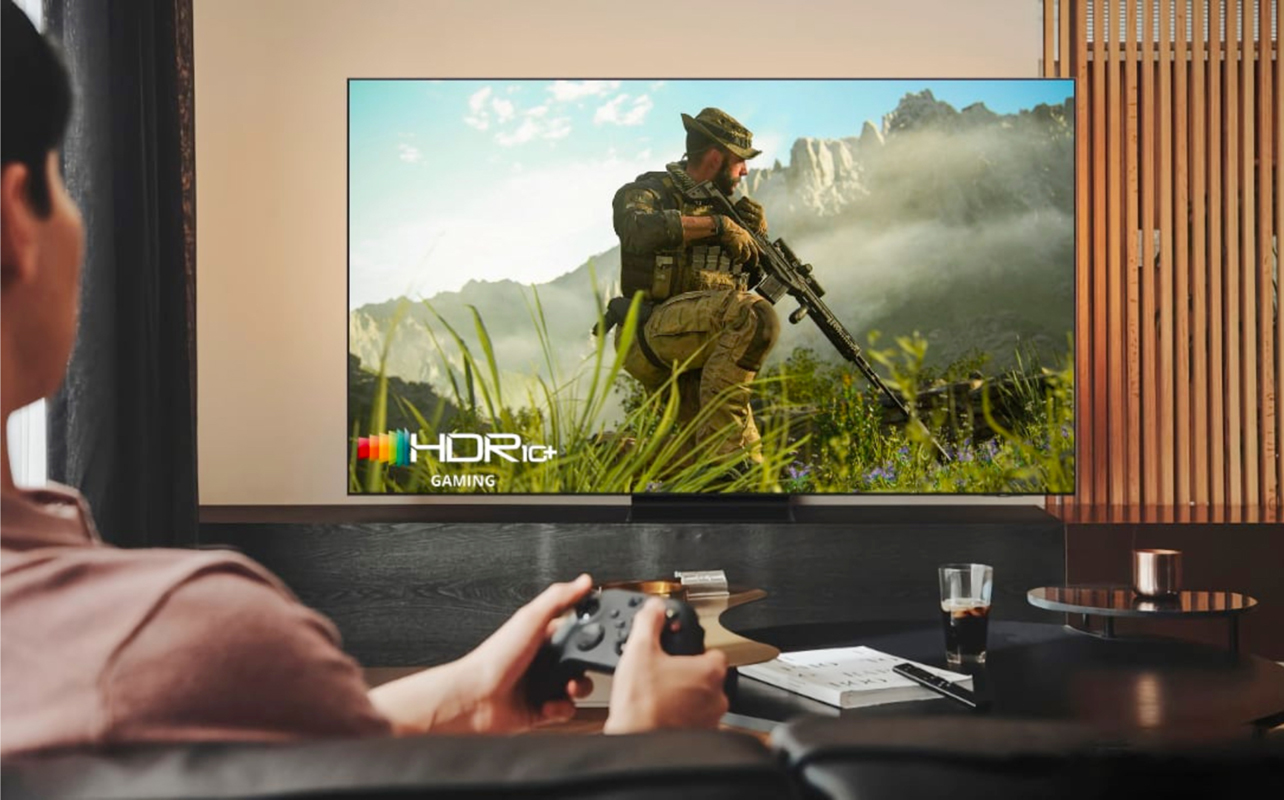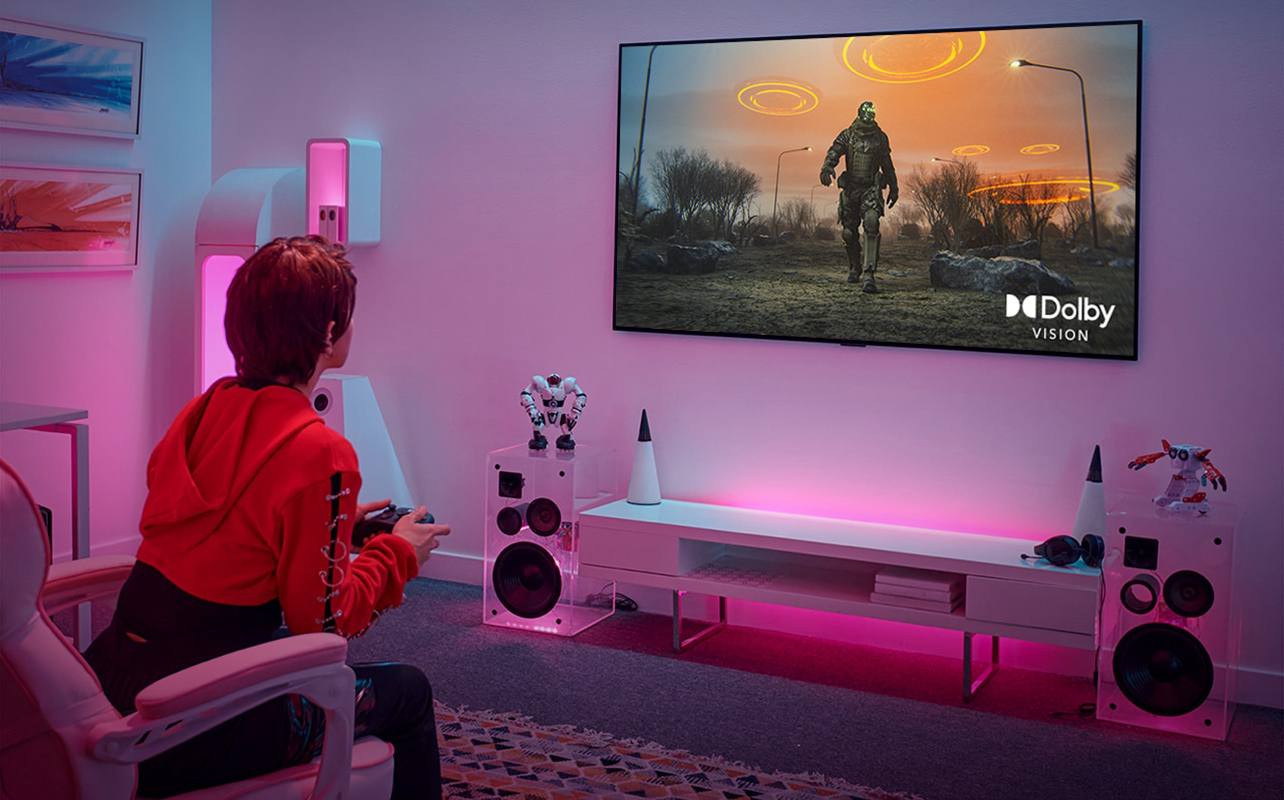
Just how good is High Dynamic Range (HDR) for gaming? Given HDR is a display technology that enhances brightness, contrast, and colour accuracy, games can look more immersive and vibrant because of it. Not to mention richer blacks, brighter highlights, and a wider range of colours than Standard Dynamic Range (SDR) for a truly cinematic look.
Except not all HDR gaming experiences are necessarily the same. Your display, hardware, and game support all impact how good HDR looks. Some gamers swear by it, while others find it more trouble than it’s worth. This guide breaks down HDR for gaming, explaining its benefits, drawbacks, and whether it’s worth enabling for your setup.
What is HDR in gaming?
HDR, or High Dynamic Range, is a display technology that increases the range of colours and contrast beyond what traditional SDR (Standard Dynamic Range) can offer. It allows for deeper blacks, brighter highlights, and richer colours, making visuals more realistic and immersive. While it’s often associated with 4K resolution TVs, the technology can apply to 1080p and 8K resolutions as well, which is why smartphones, tablets, computers, and 8K TVs can come with HDR support too.
Different HDR formats
There are several HDR formats available, each offering different features and benefits:
- HDR10: The most common HDR format, supported by most games and TVs.
- Dolby Vision: A premium format offering dynamic metadata for scene-by-scene brightness and colour adjustments.
- HDR10+: Similar to Dolby Vision but mostly developed by Samsung, offering dynamic tone mapping.
How does HDR affect gaming visuals?

Better contrast and brightness
HDR’s ability to deliver deeper blacks and brighter highlights is the most noticeable advantage, particularly in how it brings out the contrast between light and dark areas to present a more realistic and immersive gaming experience. In dark environments, like the eerie corridors in Resident Evil Village, HDR ensures shadows remain inky black without losing crucial details. Conversely, HDR takes bright scenes, like the sun-drenched landscapes of Assassin’s Creed Valhalla, and helps prevent highlights from appearing washed out to preserve the natural intensity of sunlight and reflections.
More vibrant colours
None of this would stand out as much if not for how HDR expands the colour gamut. A wider range of hues produce richer game environments that feel more lifelike, something that stands out even more when viewing the same game in the more limited colour range SDR offers. HDR ensures colours appear more intense and natural without oversaturation.
In Horizon Forbidden West, for example, HDR brings lush green forests, deep blue oceans, and realistic skin tones to life, adding to the sense of realism in the open world. In Cyberpunk 2077, HDR makes the neon-lit streets of Night City and reflective puddles more dynamic. Forza Horizon 5 benefits from HDR by showcasing the photorealistic beauty of Mexican landscapes, car reflections, and sky transitions.
With HDR, games simply “pop” more because of the improved contrast and colour reproduction. However, not all HDR implementations are equal, so it’s essential to have a display that can fully take advantage of HDR technology.
HDR 10 vs. Dolby Vision

Dolby Vision is an advanced HDR format that adjusts brightness and colour settings frame by frame, creating more precise visuals. Unlike HDR10, which uses static metadata, Dolby Vision applies dynamic metadata, ensuring that each frame in every scene is optimized for the best possible image quality. This results in more accurate colours, better contrast, and improved brightness control, making dark scenes appear deeper and bright areas more detailed without overexposure.
Key features of Dolby Vision
- 12-bit colour depth: Whereas HDR10 is 10-bit, Dolby Vision’s 12-bit output offers more shades of colour for smoother gradients and more realistic visuals. With billions of colours available, fine details like skin tones and subtle lighting effects can stand out.
- Dynamic metadata: Unlike HDR10, which applies the same settings evenly throughout an entire game, Dolby Vision adjusts brightness and contrast per scene or frame. This allows darker areas to appear more refined without blowing out bright highlights.
- Higher peak brightness: Dolby Vision is engineered to support higher peak brightness levels to better handle extreme lighting situations in games, be it intense sunlight, explosions, or neon reflections.

Device compatibility
Dolby Vision is available on select high-end TVs, gaming consoles, and streaming platforms, but its adoption otherwise varies. The Xbox Series X and Xbox Series S fully support Dolby Vision gaming for enhanced visual fidelity in compatible games. That’s not the case for the PlayStation 5, which doesn’t support Dolby Vision and continues to stick with HDR10 instead—though not HDR10+ yet. Many premium TVs from LG, Sony, and TCL support Dolby Vision, making it a desirable feature for those looking to maximize HDR performance. Streaming services like Netflix, Disney+, and Apple TV+ also offer a growing library of Dolby Vision content.
Pros and cons of HDR for gaming
HDR gaming comes with significant benefits, but it also has its drawbacks, especially depending on your hardware and game compatibility. Below is a more detailed look at the advantages and disadvantages of using HDR in gaming.
| Pros | Cons |
|---|---|
| Improved visuals: HDR enhances lighting, contrast, and colour accuracy, making scenes look more realistic. Shadows appear deeper, highlights are brighter, and colours are more vibrant, creating a visually striking experience that SDR simply can’t match. | Not all HDR displays are equal: While HDR can significantly improve visuals, it produces better results when it has more to work with. Some budget TVs and monitors with low peak brightness or limited colour depth may fail to show the full benefits of HDR, sometimes even making the image look worse than SDR. |
| More immersive experience: Games feel more lifelike with HDR, especially in open-world and cinematic titles. Rendering a wider range of colours and more detailed lighting effects makes everything from explosions to sunsets appear more natural and engaging. | HDR can introduce input lag: A TV or monitor’s processing plays a role here because some displays can struggle with HDR gaming performance. They may add noticeable latency and slower response times, particularly in fast-paced competitive games, whereas high-end HDR monitors and TVs minimize this issue. |
| Supported by modern games & consoles: Most new gaming hardware, including the PlayStation 5, Xbox Series X, and high-end gaming PCs, supports HDR at a base level. Many modern games are also optimized for HDR, ensuring better visuals and a more dynamic gaming experience. | Game compatibility varies: Not all games handle HDR properly, leading to inconsistent results. Some games have excellent HDR implementation with well-balanced brightness and contrast, while others may appear too dark, washed out, or overly bright without proper calibration. |
How to get the best HDR gaming experience?
Getting the most out of HDR in gaming starts with choosing the right display. Not all HDR-capable monitors or TVs are created equal. To enjoy a proper HDR experience, look for displays that support HDR10 or Dolby Vision, offer high peak brightness (at least 600 nits), include wide colour gamut capabilities, and have local dimming features. These elements allow HDR to fully display bright highlights and rich contrast without losing detail.
Once you’ve chosen an HDR-capable display, you’ll want to fine-tune the HDR settings. Start by enabling HDR in your console or PC system settings. Then, calibrate the brightness, contrast, and tone mapping using either the game’s built-in HDR tools or your display’s settings menu. Some titles may need additional tweaking to avoid washed-out or overly dark visuals.
It’s also important to watch out for “fake HDR”. Some budget TVs and monitors claim HDR support without meeting the necessary performance standards. These displays might accept an HDR signal but lack the brightness or colour depth to show it properly, leading to disappointing results. For a reliable experience, choose models with VESA DisplayHDR certification or check trusted reviews before purchasing.
Is HDR worth it for gaming?

If you love cinematic, story-driven games, HDR can significantly enhance immersion by improving lighting and colour depth. If your display supports true HDR with high brightness levels, turning it on can be a game-changer.
However, competitive gamers who prioritize low input lag and fast response times may prefer to disable HDR, as some HDR displays introduce lag. This can be detrimental for esports titles like Call of Duty or CS:GO, where every millisecond counts in reaction time.
Ultimately, if your hardware and display fully support HDR, it’s worth enabling to enjoy richer visuals and improved contrast. On the flip side, if you experience washed-out colours, increased input lag, or inconsistent game support, you might be better off sticking with a well-calibrated SDR setup. Find the right display for you at Best Buy Canada.
Frequently asked questions
Which is better: Dolby Vision or HDR10?
Dolby Vision offers dynamic metadata and 12-bit colour depth, adjusting brightness and contrast for each scene, while HDR10 uses static metadata. Dolby Vision generally delivers a better experience because of how adaptable it is to every scene, but HDR10 has broader support across TVs and gaming monitors.
Does Netflix use Dolby Vision or HDR10?
Netflix supports both Dolby Vision and HDR10, but Dolby Vision is used for higher-quality HDR streaming when available. If your TV supports Dolby Vision, Netflix will automatically stream content in that format.
Is Dolby Vision or HDR10 better for gaming?
Dolby Vision is the better choice for games that support it, like some Xbox Series X titles, due to its dynamic tone mapping. However, HDR10 remains the most common format, especially for PC and PlayStation gaming.
Can I watch Dolby Vision on an HDR10 TV?
Not if it doesn’t have Dolby Vision certification, which should be clearly noted on any TV or monitor offering it. An HDR10-only TV can’t display Dolby Vision content. However, most Dolby Vision content will fall back to HDR10 if your TV doesn’t support it, so you’ll still get an improved picture compared to SDR.
Does HDR affect FPS in gaming?
On consoles like the PS5 and Xbox Series X, HDR typically has minimal impact on frame rates. However, on PC, enabling HDR can cause a slight FPS drop, especially if the game isn’t well-optimized. A powerful GPU (RTX 30-series or higher, AMD RX 6000 or higher) is recommended for smooth HDR gaming.
What should I look for in an HDR gaming monitor?
A good HDR gaming monitor should have HDR10 or Dolby Vision support, at least 600 nits brightness, and VESA DisplayHDR certification. Avoid budget monitors that advertise HDR but lack true HDR performance.
This article was drafted using AI technology and then reviewed, fact-checked, and revised by a member of our editorial team.





